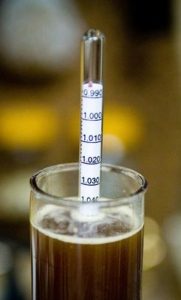Using a CoA for Malting and Brewing – Pt. 1
Planning for a successful batch of malt or brew day starts with a Certificate of Analysis (CoA for short) which provides a tremendous amount of information about the malt you will be working with. In the early days, these laboratory analyses were cost prohibitive for us….costing upwards of $300 a sample! Thanks to the good people at Hartwick College and Montana State University we are able to test every batch we produce.
What does this mean for our customers? More consistency and transparency. Maltsters use these data to guide our operations on a daily basis. In this first installment, I’ll cover extract from the maltsters and the brewers perspective.
Extract levels, commonly presented as Fine Grind Dry Basis, or FGDB, attest to amount of fermentable sugar that is available. Modern expectations for extract should exceed 79% for 6-row barley and 80% for 2-row barley. If we have a poor crop year with low test weights (<46 lb./bushel), these can be challenging to achieve. Good harvests make our jobs a little easier!
If we see extract levels declining for a good lot of barley, we can make several changes to our production plan. For example, we might choose to extend germination to allow more time for the cell walls to be broken down into additional starches and simple sugars. The trick is balance. If we go too far, soluble protein levels may increase beyond acceptable levels. This could translate to a thin, watery beer.
Brewers will use this number to determine how much malt is required to achieve a target starting gravity. Some quick math can help translate FGDB into extract potential…
Extract potential (S.G.) = 1 + (FGDB/100)*0.04621
The 0.4621 multiplier in the formula is the extract potential of sucrose (1.04621), against which all extract is measured. For example, Batch 2073 of Southern Select with a FGDB of 81.4% results in a calculated extract potential of 1.03761. Roughly 37.6 points per gallon.
Having this data available can help avoid unexpectedly high or low starting gravities that might negatively impact customer expectations, judging performance, or cost considerations.
Hopefully, this series will provide some interesting insight into how maltsters use CoAs to make process changes throughout the year in an effort to delivery consistent, flavorful products!
- Brent

